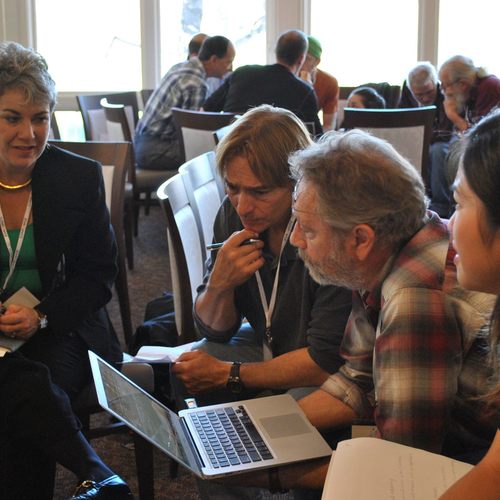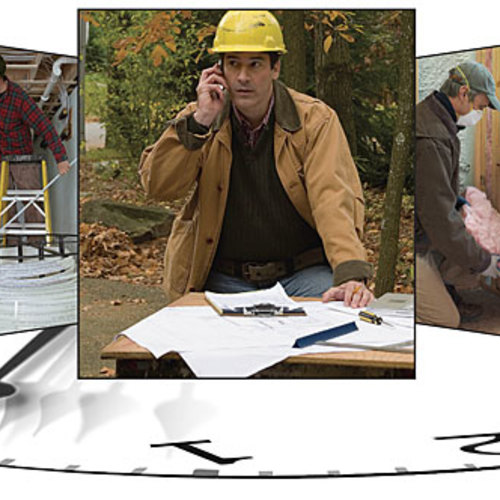
Image Credit: BuildingEnergy Bottom Lines
I’ve had three extended learning experiences in my career that have taught me the power of numbers. Thanks to my friends John Abrams of South Mountain Company and Jamie Wolf of Wolfworks, along with key support from the Northeast Sustainable Energy Association and the Yestermorrow Design Build School, I’m about to embark on a fourth such experience — one which promises to be the most exciting and powerful of all.
My first experience with the power of numbers occurred over the course of twelve years between 1989 and 2001. I was a member of a peer review group of about a dozen remodeling contractors from across the United States, run by Business Networks. We’d get together every six months, taking turns being the host, and spend our time together comparing key numbers: profit & loss and balance sheet numbers; marketing numbers; client satisfaction scores; employee compensation packages; hours worked to earn our respective salaries; and so on.
Every meeting had its eye-opening moments. More than once I’d stand up in front of the group and talk about a new great idea I was implementing, only to be stopped short by a question from another member who was looking at my numbers and seeing much worse results than what I had convinced myself I was achieving. One classic example was a time I was proudly explaining my innovative markup strategy, only to be interrupted and shown that, innovative or not, the strategy was yielding some of the worst gross margins in the group.
You need a score-keeping system
I learned essential lessons from my friends and peers in that group, lessons that have enabled me to stay in business far longer than my limited native talents would ever have gotten me. First and foremost, I learned how essential it is to have a score-keeping system in place in your business so you can quantify and track your performance with regard to as many of your business activities as possible.
I also learned how critical it is to be able to share and compare your numbers with other business owners and managers who are dealing with the same challenges, so that you can not only learn what a minimally acceptable score is but also learn what a truly winning score can be.
There were other owners who were able to pay themselves three or four times what I was able to in my first years of belonging to that group — and do it in the context of complete integrity and a high level of service to their clients. It was a revelation to me how short I had been selling myself, on any number of fronts. In the context of the group meeting, it was a quick, unforgettable lesson; left to my own devices, I don’t know how many years it would have taken me to learn.
The Passivhaus standard includes three pass-fail tests
My second experience learning the power of numbers occurred over the course of three intensive multi-day classes in 2008, when I took Katrin Klingenberg’s Passive House consultant’s training in Urbana, Illinois, with about two dozen other design and construction practitioners from across North America.
In that training, it became clear to me that the most compelling aspect of the Passivhaus standard is the way in which it attempts to quantify what a quality building is. Passivhaus gives you three pass-fail tests: how much total energy does your building use; how much heating or cooling energy does it use; and how tight is the building. Pass all three tests, and you have a quality building.
You can argue with the answers Passivhaus provides for these questions, and you probably should — we certainly did in that class, as countless others have argued with them since — but you can’t argue with their impact on our industry over the five or six years since that inaugural training class. Those three simple numbers have transformed the way many contractors and architects now think about quality buildings.
I remember how concerned we were about reaching an airtightness level of 0.6 ach50. Within a few months, though, as the first of our classmates’ building were being designed, built, and tested, we were finding that it was becoming routine not just to meet that standard but also to beat it by a comfortable margin.
Until we were told what a winning score was, we had no idea what sorts of performance numbers were possible.
NESEA members say, “Show us your utility bills”
My third extended experience learning the strength of numbers has been my nearly thirty years as a member of the Northeast Sustainable Energy Association. NESEA practitioners are, on average, five to ten years ahead of the rest of the design and construction professions. A lot of that cutting-edge experience comes from having a good handle on the numbers.
At NESEA workshops and conferences, we don’t let people make claims that their projects are “green” unless they can provide actual performance data that backs up those claims. I’ve been spoiled by that experience — I have a hard time sitting through presentations at some other conferences where speakers make claims that just can’t be true, but no one questions them because no one else in the audience really knows the numbers, either.
But the most lasting lesson I’ve learned from my friends and colleagues in NESEA is that, powerful as numbers are, they can’t by themselves get stuff done. Donella Meadows recognized this in her famous essay, “Places to Intervene in a System,” where she includes “Numbers” as one of twelve key leverage points, but puts it at the bottom of the list, at #12 — the weakest leverage.
Relatively weak leverage, yes — but the flip side is that knowing your numbers and learning to keep score is an easy and obvious entry point, a good place to start even if your goal is ultimately to change a very complex system like a building, or a business, or an entire industry.
Focus on people as well as the numbers
Note there are two threads interwoven in all three of these learning experiences. One is numbers, of course, but the other is people — my peers, colleagues, collaborators, and even some ostensible competitors who have generously shared with me their numbers regarding a wide range of aspects of our common goal of getting good projects built.
Fundamentally, it’s the people who have given the numbers their power and meaning — but without the numbers there would have been much less power and meaning to be had. I’ve needed both.
A ‘triple bottom line’ analysis looks at people, planet, and profits
I have long dreamed of cultivating a network of practitioners who blend the best of my Business Networks experience with the best of the Passivhaus training and the NESEA community — who make a concerted effort to break down what I often see as a demising wall between those in the design and construction professions who are good craftspeople, and those who are good businesspeople.
What I have in mind is a network of practitioners who meet periodically in small, high-trust groups to spend time not just sharing profit and loss statements and asking business management questions, but also sharing building performance data and asking building science questions; helping each other track the carbon impact of their operations as assiduously as they track their net profit; developing long-term plans for their businesses as well as for the buildings they work on; and supporting each other in creating businesses every bit as great as their buildings, and buildings every bit as great as their businesses.
The outcome would be an ongoing “triple bottom line” analysis: people, planet, profits — with each getting equal emphasis.
That’s where John Abrams of South Mountain Company, Jamie Wolf of Wolfworks, the Northeast Sustainable Energy Association, and the Yestermorrow Design Build School come in. We’re working together to create just such a network. It’s called Building Energy Bottom Lines, and it just launched.
Identifying the critical numbers
Imagine getting together with twelve of your favorite contributors and commentators here at Green Building Advisor twice a year, in person, for a couple days of intensive conversation about not only the technical aspects of designing and building high-performance projects but also about responses to the challenges of making a living at it. That’s what we expect Bottom Lines experience to be like.
If you think having a seat at that table would have any value to you at all, don’t hesitate to sign up for one of our workshops at BuildingEnergy 14.
In the meantime, Martin Holladay has agreed to let me post a series of blogs over the course of the next few months that will discuss examples of critical numbers that I think we should be tracking in all aspects of our work. I hope to be able to provoke some discussions about those numbers — and I expect I’ll be getting plenty of material from conversations I’ll be having with other Building Energy Bottom Lines participants.
Paul Eldrenkamp is founder and owner of Byggmeister, a Boston-area residential remodeling firm; a partner in the DEAP Energy Group, a consulting company that helps architects, builders, and homeowners make significant improvements in the performance levels of their new construction and retrofit projects; and a member of the Board of Directors of the Northeast Sustainable Energy Association.
Weekly Newsletter
Get building science and energy efficiency advice, plus special offers, in your inbox.















0 Comments
Log in or create an account to post a comment.
Sign up Log in